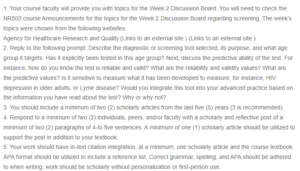Epidemiological Methods
Osteoporosis is a disease associated with microarchitectural changes, skeletal instability, and decreased bone density to the degree that they fracture easily. The hip, humerus, spinal cord, pelvis, and wrist bones are the most often affected (Kanis et al., 2022). The Fracture Risk Assessment Tool (FRAX) is a commonly used method for assessing the risk of osteoporotic fracture. The tool FRAX is a free web calculator that determines your likelihood of suffering a hip fracture or other significant fracture in the upcoming ten years, particularly if you have osteoporosis. The FRAX tool aims to assess the risk of fractures in persons with osteoporosis. It integrates data on the risk of fracture from clinical risk variables and whether or not BMD is employed (Kanis et al., 2022). The WHO created FRAX, which is used widely by postmenopausal women and men between ages 40 and 90.
Do you need a unique copy of the “Epidemiological Methods” ? Get in touch with us.
A study by McCloskey et al. (2022) recorded that in men, the reported risk was 10.7 percent (95% CI) with an 8.4% prediction value. In comparison, the 10-year prediction of risk for osteoporotic fractures in women was 12.0 percent (95% CI), with an 11.1% prediction value for FRAX combined with BMD. Hence, a FRAX tool in Canada calibrated on national data on hip fractures produces fracture risk projections consistent with actual fracture incidences across a broad range of risk groups. From the findings, it is evident that the tool is valid and reliable. The tool is also sensitive in screening for osteoporosis since its sensitivity was found to be 93.3 percent (95% CI), according to the Osteoporosis Risk Evaluation Framework (Chavda et al., 2022). I will integrate the FRAX screening tool into my practice because it is valid and reliable. It also aids in improving the targeting of those at high risk for fractures. I will be able to identify patients who might require further support by using the FRAX score.
References
Chavda, S., Chavda, B., & Dube, R. (2022). Osteoporosis Screening and Fracture Risk Assessment Tool: Its Scope and Role in General Clinical Practice. Cureus, 14(7). 10.7759/cureus.26518
Kanis, J. A., Harvey, N. C., Johansson, H., Lorentzon, M., Liu, E., Leslie, W. D., & McCloskey, E. V. (2022). FRAX. In Senior Trauma Patients (pp. 89-99). Springer, Cham.
McCloskey, E. V., Harvey, N. C., Johansson, H., Lorentzon, M., Liu, E., Vandenput, L., … & Kanis, J. A. (2022). Fracture risk assessment by the FRAX model. Climacteric, 25(1), 22-28. https://doi.org/10.1080/13697137.2021.1945027
ORDER A PLAGIARISM-FREE PAPER HERE
We’ll write everything from scratch
Question
1. Your course faculty will provide you with topics for the Week 2 Discussion Board. You will need to check the NR503 course Announcements for the topics for the Week 2 Discussion Board regarding screening. The week’s topics were chosen from the following websites:

Epidemiological Methods
Agency for Healthcare Research and Quality (Links to an external site.) (Links to an external site.)
2. Reply to the following prompt: Describe the diagnostic or screening tool selected, its purpose, and what age group it targets. Has it explicitly been tested in this age group? Next, discuss the predictive ability of the test. For instance, how do you know the test is reliable and valid? What are the reliability and validity values? What are the predictive values? Is it sensitive to measure what it has been developed to measure, for instance, HIV, depression in older adults, or Lyme disease? Would you integrate this tool into your advanced practice based on the information you have read about the test? Why or why not?
3. You should include a minimum of two (2) scholarly articles from the last five (5) years (3 is recommended).
4. Respond to a minimum of two (2) individuals, peers, and faculty with a scholarly and reflective post of a minimum of two (2) paragraphs of 4-to five sentences. A minimum of one (1) scholarly article should be utilized to support the post in addition to your textbook.
5. Your work should have in-text citation integration, at a minimum, one scholarly article and the course textbook. APA format should be utilized to include a reference list. Correct grammar, spelling, and APA should be adhered to when writing; work should be scholarly without personalization or first-person use.

